Current Affairs – 18 March 2024
Mars resonance on Earth
Mars causes the churning of Earth’s ocean every 2.4 million years, which is linked to periods of increased solar energy and a warmer climate.

| Mars |
|
- Astronomical Grand Cycles – Deep-sea currents shifts every 2.4 million years, and this cycle is known as the astronomical grand cycles.
- This occurs due to the interaction between the orbits of Earth and Mars.
NASA’s Ingenuity is the first helicopter to fly on Mars, helps in collecting samples from the surface from various locations on Mars.
- Resonance – Mars and Earth are affecting each other through a phenomenon signified as resonance.
- Resonance is a concept wherein two bodies affect each other based on their gravitational push or pull on each other.
- This phenomenon is essential in keeping a balance in the solar system and ensuring the steady orbiting of the planets as every planet’s orbiting affects it’s nearby one due to this resonance.
- Eccentricity – Resonance affects the shape of their orbits, called eccentricity (a measure of how close to circular their orbits are).
- Due to this resonance, the Earth is pulled slightly closer to the sun by Mars’ gravitational pull.
- This means, our planet is exposed to more solar radiation and hence has a warmer climate, before drifting backward again, all over a period of 2.4 million years.
- Deep Ocean Currents – During warmer times, the deep-sea record shows more breaks, connected to stronger deep ocean currents.
- Eddies – The stronger currents, known as giant whirlpools or eddies, may reach the seafloor at the deepest parts of the ocean, known as the abyss or abyssal seafloor.
Eddies, played a big role in warming seas in the past.
- Eddies don not move water like the AMOC, which shifts water between different latitudes.
- Contourites – Once connected to the deep seafloor, these huge whirlpools could cause erosion and create large snowdrift-like buildups of sediments called “contourites”.
- AMOC – Eddies may help the offsetting of ocean stagnation, which follows the slowing of Atlantic meridional overturning circulation (AMOC).
- AMOC is a vast system of ocean currents that carries warm water from the tropics to the North Atlantic Ocean.
- It is responsible for driving the Gulf Stream and maintaining warm climates in Europe.
India’s maiden interplanetary mission, Mangalyaan or the Mars Orbiter Missions (MOM), explores and observes Mars surface features, morphology, mineralogy and the Martian atmosphere.
Model Code of Conduct (MCC)
Model Code of Conduct comes into force for 2024 Lok Sabha elections.
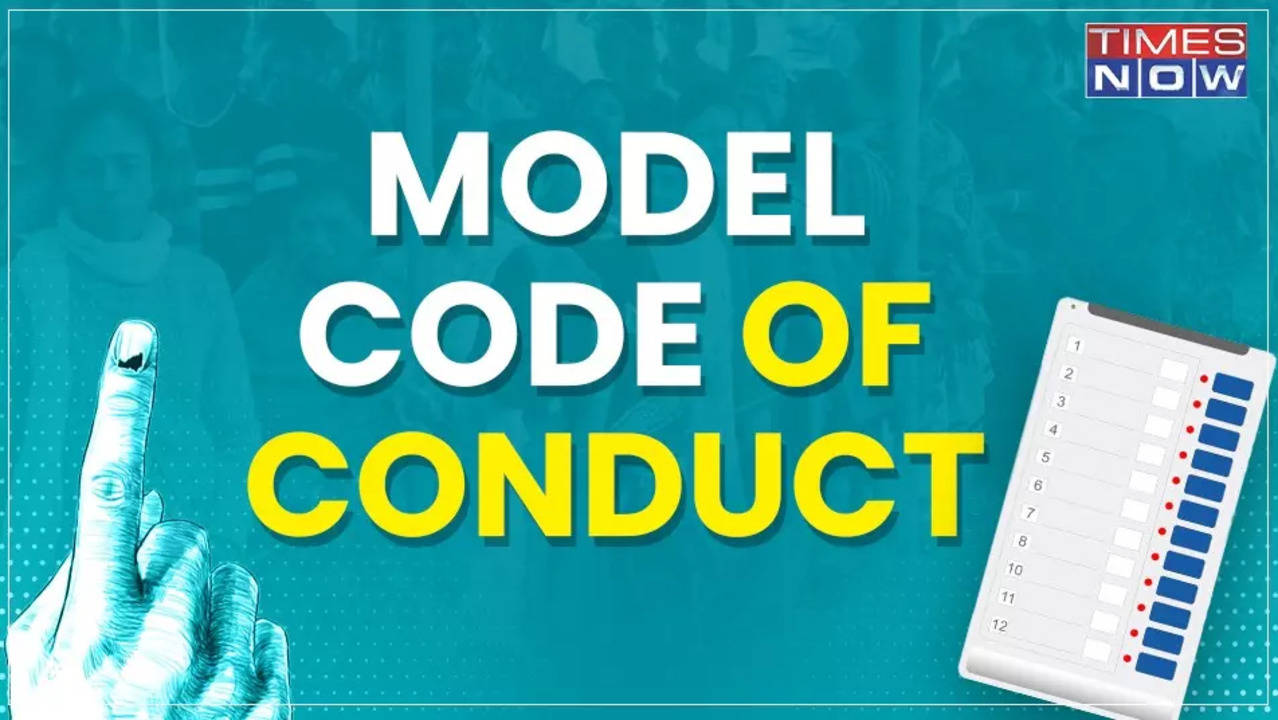
- Guidelines – The MCC of the Election Commission of India (ECI) is a set of guidelines issued to regulate political parties and candidates prior to elections.
- Rules – The rules range from issues related to speeches, polling day, polling booths, portfolios, the content of election manifestos, processions, and general conduct, so that free and fair elections are conducted.
- Comes into Force – The MCC comes into force from the date the election schedule is announced until the date that results are out.
- Provisions – The MCC contains eight provisions dealing with general conduct, meetings, processions, polling day, polling booths, observers, the party in power, and election manifestos.
- Restrictions – Parties in both centre and state, should ensure that it does not use its official position for campaigning.
- No policy, project or scheme can be announced that can influence the voting behaviour.
- No advertising at the cost of the public exchequer or using official mass media for publicity on achievements to improve chances of victory in the elections.
- Ministers must not combine official visits with election work or use official machinery for the same.
- Ruling party cannot use government transport or machinery for campaigning.
- Ruling government cannot make any ad-hoc appointments in government, public sector undertakings etc., which may influence the voters.
- Political parties can be criticised based only on their work record and no caste and communal sentiments can be used to lure voters.
- Mosques, Churches, Temples or any other places of worship should not be used for election campaigns.
- Bribing, intimidating or impersonation of voters is also barred.
MCC ensures that public places and facilities are provided to the opposition parties on the same terms and conditions on which they are used by the party in power.
- Election Silence – Holding public meetings during the 48-hour period before the hour fixed for the closing of the poll is also prohibited.
- The 48-hour period is known as election silence.
- Binding Nature – It has no statutory backing, meaning anybody breaching the MCC cannot be proceeded against under any clause of the Code.
- Everything is voluntary.
- The Election Commission (EC) uses moral sanction or censure for its enforcement.
- The ECI can issue a notice to a politician or a party for an alleged breach of the MCC either on its own or based on a complaint by another party or individual.
- Once a notice is issued, the person or party must reply in writing, either accepting fault and tendering an unconditional apology or rebutting the allegation.
Bugun Liocichla
Arunachal Bugun Tribe donates land for critically endangered songbird Bugun Liocichla.

- Bugun Liocichla is a small babbler bird (only 20 cm) with olive-grey plumage and black cap.
Bugun Liocichla is found only in the Eaglenest Wildlife Sanctuary and nowhere else in the world.
- The bird was identified by Ramana Athreya, a Pune-based astrophysicist.
- The avian species is critically endangered with only 14 individual birds spotted so far in the Braiduah village under the Singchung sub-division.
Bugun Liocichla was the first bird to be discovered in India since its independence, in 2006.
- As a major step towards conservation, the Arunachal Pradesh government finally notified Braiduah Community Reserve under the Wildlife Protection Act, 1972.
- The reserve is situated adjacent to the Eaglenest Wildlife Sanctuary.
Bugun Liocichla Utsav is a festival held to commemorate 15 years of the bird’s discovery.
| Bugun Tribes |
|
Tentative UNESCO list
Six heritage sites from Madhya Pradesh earn a spot on UNESCO’s tentative list.

| Procedure to be included in World Heritage Site (WHS) |
|
- The sites included in the new list included:
- Gwalior Fort, Historical Group of Dhamnar, Bhojeshwar Mahadev Temple, Rock Art Sites of Chambal Valley, Khooni Bhandara, God Memorial of Ramnagar.
| Sites included in UNESCO Tentative List | |
| Sites | Features |
| Gwalior Fort |
|
| Historical Group of Dhamnar |
|
| Bhojeshwar Mahadev Temple |
|
| Rock Art Sites of Chambal Valley |
|
| Khooni Bhandara |
|
Many important sites of Madhya Pradesh are already part of the tentative list of UNESCO, such as the Satpura Tiger Reserve, The historic ensemble of Orchha, Iconic Saree Weaving Clusters of India etc.
| Quick Facts |
| Ramnagar Ramlila |
|
Revenue-based financing
Revenue-based financing (RBF) is gaining traction amongst statups and digital SMEs, as venture capital flow continues to be dry and traditional credit remains out of reach for many.
About Revenue-based financing:
- It is a non-collateralised debt against a percentage of gross revenue. It is an alternative financing product for digitally-enabled businesses, where they can raise capital in exchange for a percentage of their gross revenue as a monthly repayment, in addition to a fixed fee between 8-10% of the principal amount.
- It is usually opted by companies with steady revenue flow that have a high requirement for short-term working capital, such as cloud kitchens, e-commerce merchants, financial services companies or software-as-a-service firms.
- In this type of investment investors receive a regular share of the businesses income until a predetermined amount has been paid.
- Typically, this predetermined amount is a multiple of the principal investment and usually ranges between three to five times the original amount invested.
Revenue-based Financing vs. Debt and Equity-based Financing
- Revenue-based financing seems similar to debt financing because investors are entitled to regular repayments of their initially invested capital.
- However, revenue-based funding does not involve interest payments. Instead, the repayments are calculated using a particular multiple that results in returns that are higher than the initial investment.
- Also, in revenue-based financing, a company is not required to provide collateral to investors. Unlike equity-based investment models, there is no transfer of an ownership stake in a company to investors.
Exercise LAMITIYE
Indian Army contingent departed for Seychelles to participate in the Tenth edition of Joint Military Exercise “LAMITIYE-2024”.

About Exercise LAMITIYE:
- It is a joint military exercise between the Indian Army and Seychelles Defence Forces (SDF). ‘LAMITIYE’ meaning ‘Friendship’ in the Creole language is a biennial training event and has been conducted in Seychelles since 2001.
- 45 personnel each from the GORKHA RIFLES of the Indian Army and Seychelles Defence Forces (SDF) will participate in the 2024 exercise.
- The Exercise will enhance cooperation and interoperability between both the sides during Peace Keeping Operations. The exercise will also build and promote bilateral military relations in addition to exchanging skills, experiences and good practices between both armies
- Both sides will jointly train, plan and execute a series of well-developed tactical drills for neutralization of likely threats that may be encountered in Semi-Urban environment, while exploiting and showcasing new-generation equipment and technology.
Co-branded Credit card
The tightening of regulations by the Reserve Bank of India (RBI) may prompt banks to lean towards collaborating with larger fintech companies for co-branded credit card partnerships.

About Co-branded Credit card:
- It is a card that is issued jointly by a card-issuer and a co-branding entity bearing the names and logos of both the partnering entities
- Usage: They can be used in any location where the card network is accepted, not just with the co-branding retailer.
- Features: They typically come with rewards or other benefits that are tied specifically to purchases made at the co-branding retailer and usually offer rewards or benefits for general purchases as well.
How Co-Branded Cards Work?
- Co-branded cards work like any normal credit card. They can be used for any purchase wherever cards in that network (such as Mastercard, Visa, American Express, or Discover) are accepted.
- Co-branded card relationships can be structured in a variety of ways. But basically, in order to issue a co-branded credit card, a merchant (such as a department store, gas station, or airline) or another organization (like a university or nonprofit) must partner with a financial institution, which provides the actual credit.
Integrated Assessment Models
The UN Intergovernmental Panel on Climate Change (IPCC) uses ‘modelled pathways’ drawn using Integrated Assessment Models (IAMs) to estimate what it will take to limit the warming of the earth’s surface.
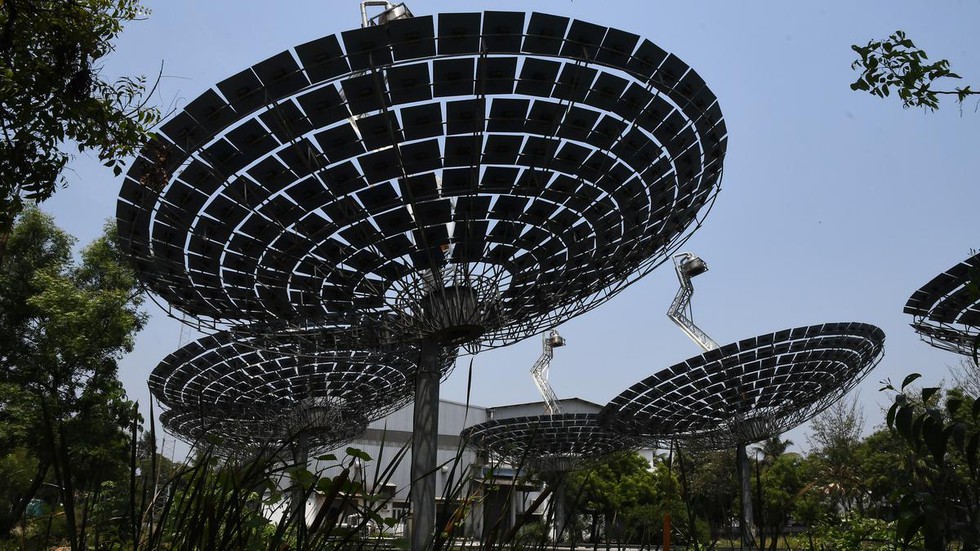
About Integrated Assessment Models:
- These are complex models that examine possible futures of the energy and climate system and economies. They are “integrated” because they combine different strands of knowledge to model human society alongside parts of the Earth system.
- Its macroeconomic models can point to future growth levels in terms of GDP; its energy models can project future consumption; vegetation models can examine land-use changes; and earth-system models use the laws of physics to understand how climate evolves.
- With such integration across disciplines, IAMs are meant to provide policy-relevant guidelines on climate action. They also prioritise least-cost assessments — for example, the absolute cost of setting up a solar plant or undertaking afforestation in India is lower than in the U.S.
- However, experts have said they could exercise the option of enabling countries to equitably share the burden of action, where the richest undertake more drastic mitigation action more immediately.
- They capture human-society interactions by describing them as coupled systems on the relevant geographical and intertemporal scales for policy-making.
- They typically include a description of human activity (e.g. energy and land use), direct drivers of environmental change (e.g. emissions, land use and resource use), resulting impacts (e.g. climate change and consequences for crop yields) and response options.
Lake Baikal
Recent study showed that ancient ecosystem of Lake Baikal is at risk of global warming.

About Lake Baikal:
- It is located in the southern part of eastern Siberiawithin the republic of Russia. It is the oldest existing freshwater lake on Earth (20 million–25 million years old), as well as the deepest continental body of water.
- It is also the world’s largest freshwater lake by volume, containing about one-fifth of the fresh water on Earth’s surface. The largest rivers that flow into it include the Selenga, Barguzin, Upper (Verkhnyaya) Angara, Chikoy, and Uda.
- It is known as the ‘Galapagos of Russia’. In 1996 Lake Baikal was designated a UNESCO World Heritage Site
T+0 Settlement
The Securities and Exchange Board of India (SEBI) recently approved the launch of the beta version of the T+0 settlement on an optional basis.
)
About T+0 Settlement:
- It means that the funds and securities for a transaction will be settled on the day the trade was entered.
- At present, the Indian securities markets operate on a T+1 settlement cycle, where the settlement happens on the next day of trade.
- In 2002, the regulator cut down the settlement period from T+5 to T+3, and in 2003, SEBI further reduced it to T+2. In 2021, the T+1 settlement started and was gradually implemented, with the final phase completed in January 2023.
- Advantages:
- Instant receipt of funds and securities to the investor. It will eliminate the risk of any kind of settlement shortage and give greater control over funds and securities to the investor.
- There is expected to be lower counterparty risk and increased liquidity in the market.
- The Moscow Exchange (MOEX), Korea Exchange (KRX), Taiwan Stock Exchange (TWSE), and Hong Kong Stock Exchange (HKEX) offer T+0 settlements for certain types of trades and transactions.
Rice Bran
The Central Government has extended the ban on exports of de-oiled rice bran by another four months
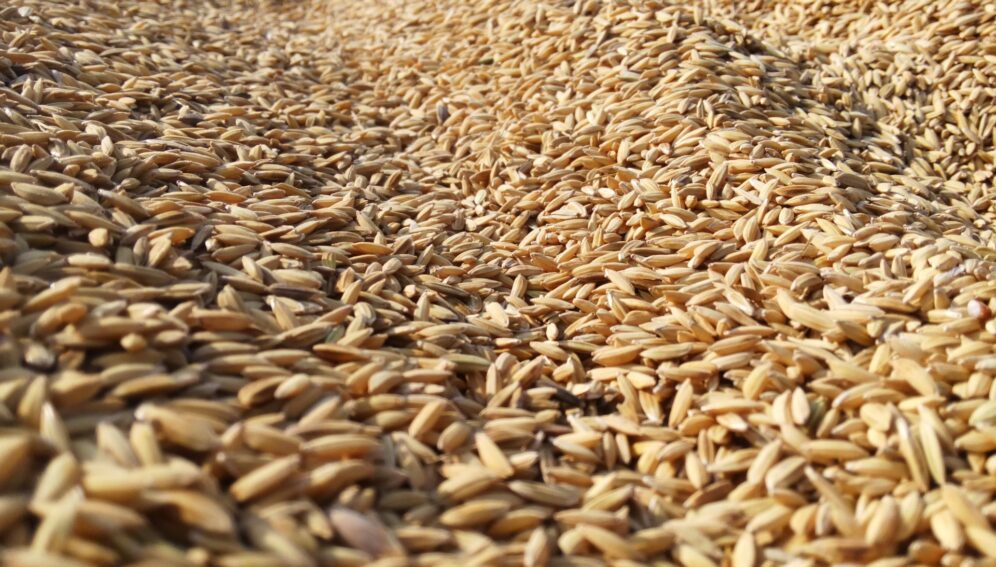
About Rice Bran:
- It is one of the main byproducts in the process of rice milling. It is the outer brown layer of brown rice and is separated during the milling process.
- The bran fraction contains 14-18% oil.
- Rice bran oil is popular as a “healthy oil” in Japan, Asia, and particularly India.
- It is a pale yellow, odourless, nutty-flavoured oil with a sweet taste.
- It is a good source of unsaturated fats, vitamin E and other important nutrients.
- The nutrient composition of rice bran depends on the rice variety and the efficiency of the milling system. It is currently mostly used as animal feed. The oily nature makes bran an excellent binder for animal feeds.
- Health Effects:
- It has anti-diabetic, lipid-lowering, hypotensive, antioxidant and anti-inflammatory effects, while its consumption also improves bowel function.
- It contains substances that might decrease how much cholesterol the body absorbs. It might also decrease calcium absorption, which might help prevent certain types of kidney stones from forming.
Indian Youth Uday Bhatia and Manasi Gupta Receive ‘Diana Memorial Award’
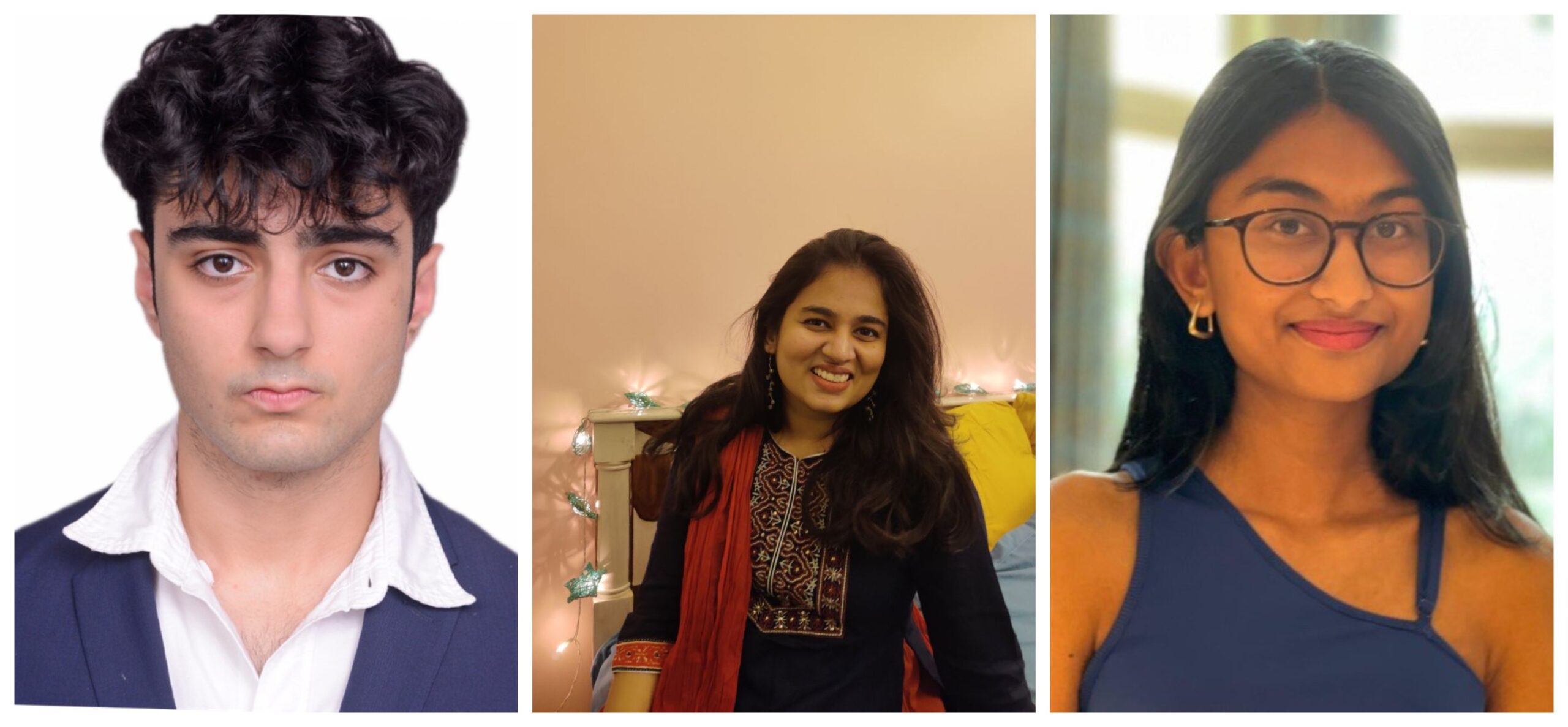
Diana Memorial Award
- Uday Bhatia and Manasi Gupta from India were honored with the prestigious ‘Diana Memorial Award’ on 14 March 2024.
- Along with them, a total of 20 people from around the world were honored with the ‘Diana Memorial Award’.
- This award is given every two years in memory of Princess Diana.
- It recognizes exceptional youth for their social work or humanitarian services.
- The Diana Award charity, established in memory of the late Princess of Wales, is celebrating its 25th anniversary.
Prince William Presents the Awards
- Uday Bhatia and Manasi Gupta received the award from Prince William at the awards ceremony at the Science Museum, London.
- Prince William is the elder son of the late Princess Diana.
About Uday Bhatia
- Uday Bhatia is an inventor from Delhi.
- His company, Uday Electric, founded by the 18-year-old, is headquartered in Delhi.
- Uday’s low-cost invention can provide relief from power cuts.
- He started mentoring 16-year-old school students in a slum in Uttar Pradesh, where he found that power cuts were hampering their education.
- His invention provided uninterrupted lighting for 10 hours during power cuts, benefiting 950 families and increasing their education and employment opportunities.
About Manasi Gupta
- Manasi Gupta is a mental health campaigner from Haryana.
- The Huesothemind Foundation, founded by Manasi Gupta, is headquartered in Gurugram.
- During the COVID-19 pandemic, the 24-year-old’s mental health services were appreciated, and she received recognition.
About Princess Diana
- Princess Diana was the daughter-in-law of the British royal family.
- She died on 31 August 1997 and was buried a few days later, on 6 September 1997, at the age of 36.
- Despite her short life, she became the most popular woman in the world.
- Diana broke the image of the royal family, broke barriers, and created her own identity, ultimately suffering a painful death.
The ‘Diana Memorial Award honours the legacy of Princess Diana and recognizes the exceptional contributions of young individuals like Uday Bhatia and Manasi Gupta, who are making a positive impact on society.
Odisha CM Naveen Patnaik Inaugurates India’s First Indoor Athletics and Aquatic Centres
Odisha Chief Minister Naveen Patnaik inaugurated India’s first indoor athletics stadium and indoor aquatic centre at the Kalinga stadium in Bhubaneshwar. The Chief Minister also laid the foundation stone for a new indoor diving centre in the stadium complex.
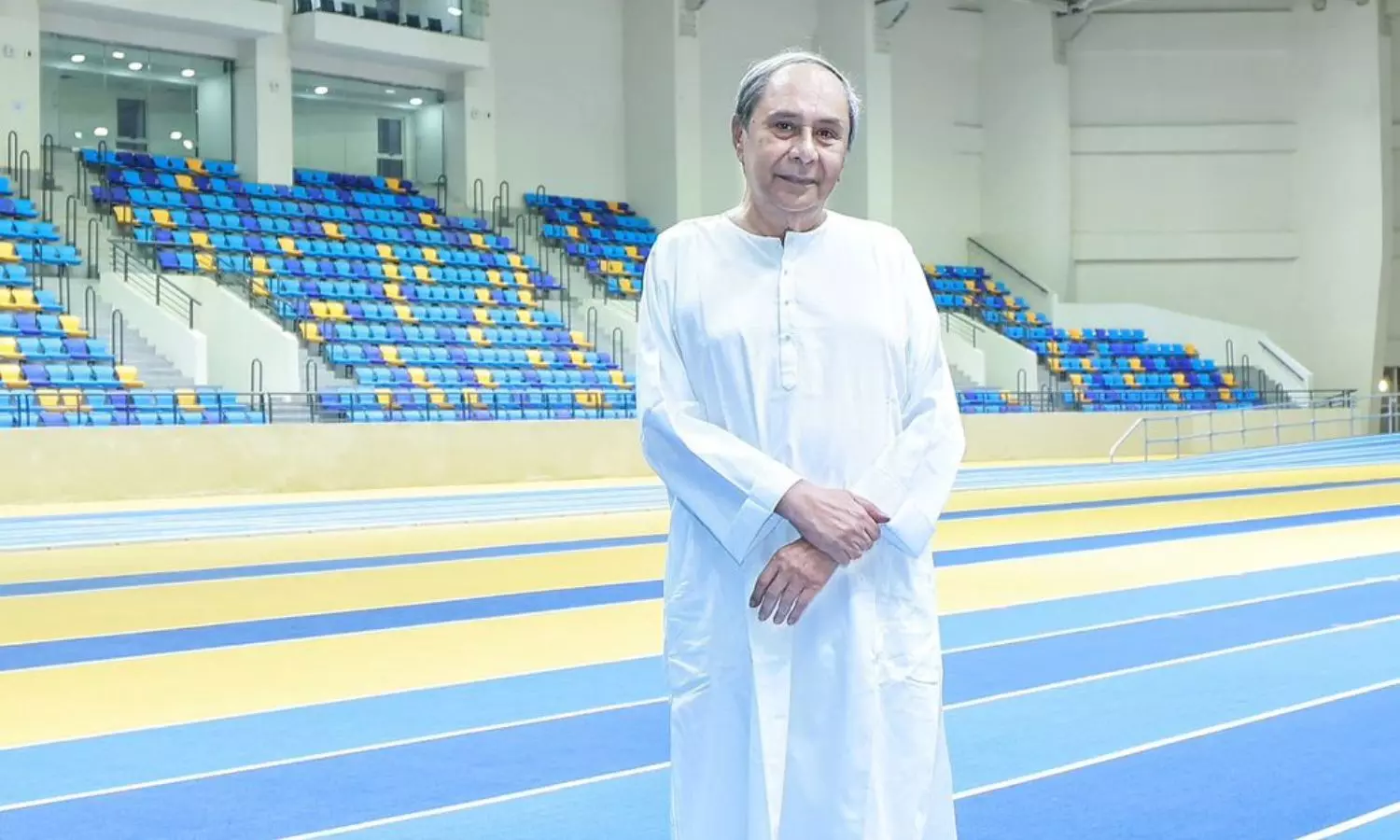
According to Patnaik, the new indoor facilities will help athletes train throughout the year without fear of weather-related disturbances.
India’s First Indoor Athletics Stadium
- The newly developed indoor athletics stadium is the first of its kind in India.
- It has facilities to host national and international athletic events.
- The stadium, built at an estimated cost of Rs 120 crore, can accommodate 120 athletes for full-time coaching.
- It also has a classroom for studies, medical facilities, and a dedicated pantry for athletes.
- Italian company Mondo SpA has set up a 10,000 sq. meter track in the stadium.
- The stadium has facilities for long jump, triple jump, 100m and 200m race tracks, pole vault, and shot put events.
- It will be a training ground for the Odisha Reliance Foundation Athletics High-Performance Centre.
Indoor Aquatic Centre
- The indoor aquatic centre has a 50-meter Olympic-size pool and a 25-meter warm-up pool with temperature control.
- It has a seating capacity of 1000 and can hold national and international events.
- The Odisha Inspire Institute of Sport High-Performance Center will operate from this aquatic centre.
- The Inspire Institute of Sport in Odisha is a sports coaching centre that trains athletes for the Olympics, Commonwealth Games, and other boxing, wrestling, judo, and athletics events.
Indoor Diving Centre
- The Chief Minister also laid the foundation stone for an Indoor Diving Centre to be built at the Kalinga Stadium complex.
- The diving centre will have a diving pool of 25 meters with an additional 5-meter pool for synchronized swimming.
- The diving pool will be temperature-controlled.
The inauguration of these world-class indoor facilities at the Kalinga Stadium complex in Bhubaneshwar is a significant step towards promoting sports and providing state-of-the-art training infrastructure for athletes in India.
Senior Bureaucrat Rahul Singh Appointed New CBSE Chief
Senior bureaucrat Rahul Singh has been appointed as the chairperson of the Central Board of Secondary Education (CBSE), as part of a senior-level bureaucratic reshuffle effected by the Centre.

Succeeding Nidhi Chhibber
- Rahul Singh will succeed Nidhi Chhibber, who has been named Advisor in the Niti Aayog.
- The Appointments Committee of the Cabinet (ACC) has approved the appointment of Singh, a 1996-batch Indian Administrative Service (IAS) officer of Bihar cadre, as chairperson, CBSE.
Current Role
- Rahul Singh is currently serving as Additional Secretary, Department of Personnel and Training (DoPT).
Other Appointments
- Nidhi Chhibber will be advisor, NITI Aayog in the rank and pay of Additional Secretary by temporarily upgrading the post and extending her central deputation tenure by one year beyond March 24, 2024.
- A P Das Joshi, a 1994-batch IAS officer of Assam-Meghalaya cadre, will be Additional Secretary, DoPT in place of Singh.
- Rajeev Kumar Mital, Additional Secretary and Financial Advisor in the Department of Atomic Energy, has been appointed as Director General, National Mission for Clean Ganga under the Ministry of Jal Shakti.
- Gyanesh Bharti will be Additional Secretary in the Ministry of Women and Child Development.
- Deepak Narain has been named as Additional Secretary & Financial Advisor, Ministry of Information & Broadcasting.
CBSE Overview
- The Central Board of Secondary Education (CBSE) is a national-level educational board that conducts examinations for secondary and senior secondary levels across India. With Rahul Singh’s appointment as the new chairperson, the CBSE is expected to continue its efforts in providing quality education and ensuring efficient conduct of examinations.
Telangana Governor Tamilisai Soundararajan Resigns

Resignation of Tamilisai Soundararajan
- Tamilisai Soundararajan, the Governor of Telangana, has resigned from her position on Monday, March 18, 2024. According to sources, she is likely to contest the Lok Sabha elections from the state of Tamil Nadu.
- Soundararajan has also resigned from her role as the Lieutenant Governor of the Union Territory of Puducherry. She has sent her resignation letter to the President of India, Droupadi Murmu.
Second Governor of Telangana
- Tamilisai Soundararajan served as the second governor of the state of Telangana. She assumed the office on September 8, 2019. In addition to her role as the governor of Telangana, she also served as the Lieutenant Governor of Puducherry since February 18, 2021.
- Prior to becoming the governor, Soundararajan held the position of National Secretary and Tamil Nadu State Unit President of the Bharatiya Janata Party (BJP).
Appointment of Governors
The governor of any state in India, including Telangana, is appointed by the President of India. Telangana, which was formed on June 2, 2014, has had two governors so far:
- ESL Narasimhan (From June 2, 2014, to September 7, 2019)
- Tamilisai Soundararajan (From September 8, 2019, to March 18, 2024)
The governors are the nominal heads and representatives of the President of India in their respective states. Although they are appointed for a term of 5 years, their tenure is not fixed, and they can be removed earlier by the President.
Navneet Sehgal Appointed as Prasar Bharati Board Chairman
Retired bureaucrat Navneet Kumar Sehgal has been appointed as the new chairperson of the Prasar Bharati Board. The position had been vacant for four years after A Surya Prakash retired in February 2020 after turning 70, the upper age limit for the post.
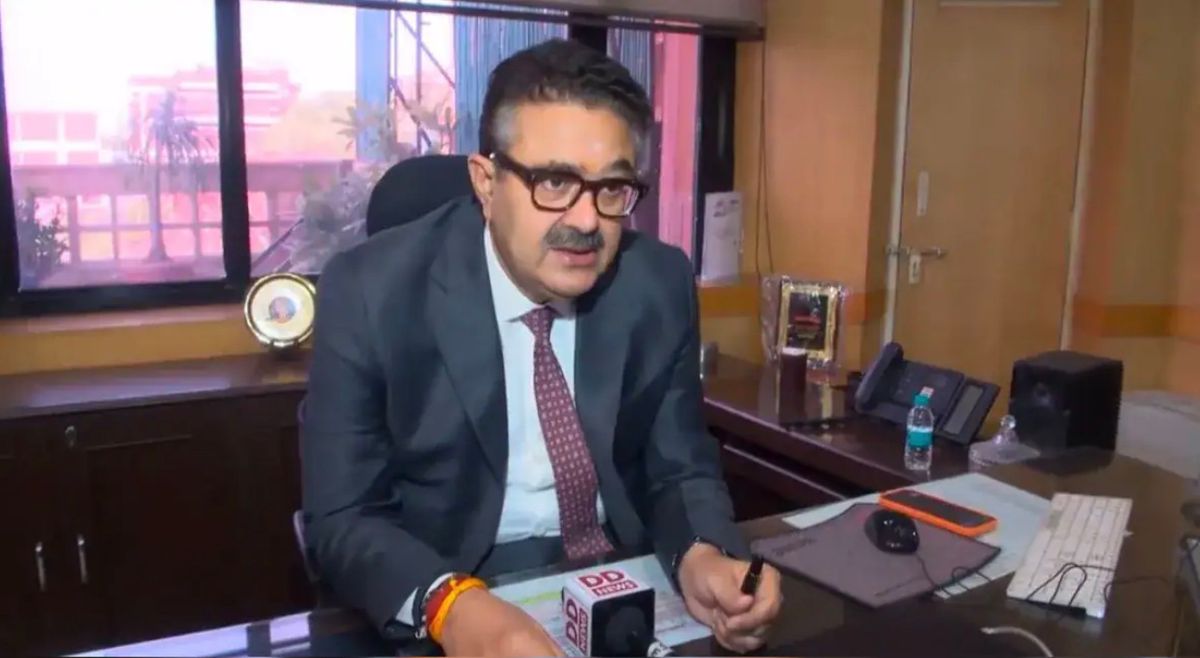
Appointment Process
- Vice President Jagdeep Dhankhar on Friday chaired a meeting to appoint the chairman of the nation’s public broadcaster. Present at the meeting were Press Council of India chairperson retired Justice Ranjana Desai and information and broadcasting secretary Sanjay Jaju.
About Navneet Sehgal
- Sehgal is a retired IAS officer of the 1988 batch from the Uttar Pradesh cadre.
- He has been closely associated with UP chief minister Yogi Adityanath.
- Sehgal played a significant role in UP’s global investor summit and hosted MotoGP in Noida last year while serving as the additional chief secretary of sports and youth in the UP government.
Previous Roles
- In 2020, Sehgal was tasked with overseeing the information department following the Hathras rape case.
- In 2022, he was transferred to the sports department.
- In the past, he served as the information secretary in the then-Mayawati-led government from 2007 to 2012.
- In 2013, Sehgal was appointed as principal secretary in the then Akhilesh Yadav-led government during the 2013 Muzaffarnagar riots and also oversaw the Lucknow-Agra Expressway project.
About Prasar Bharati
- Prasar Bharati is India’s largest public broadcasting agency.
- It was established by the Prasar Bharati Act of 1990, which came into effect in 1997.
- The agency includes Doordarshan Television Network and All India Radio, previously part of the information and broadcasting ministry.
- On March 13, Prasar Bharati launched PB-SHABD, a news-sharing service for registered entities to access news feeds from its network of reporters.
The appointment of Navneet Sehgal as the new Prasar Bharati Board Chairman fills a crucial vacancy and is expected to bring new leadership to India’s public broadcasting agency.
Ballistic Missiles
North Korea recently fired short-range ballistic missiles towards its eastern waters as the United States Secretary of State prepared to open a democracy summit in neighbouring South Korea.
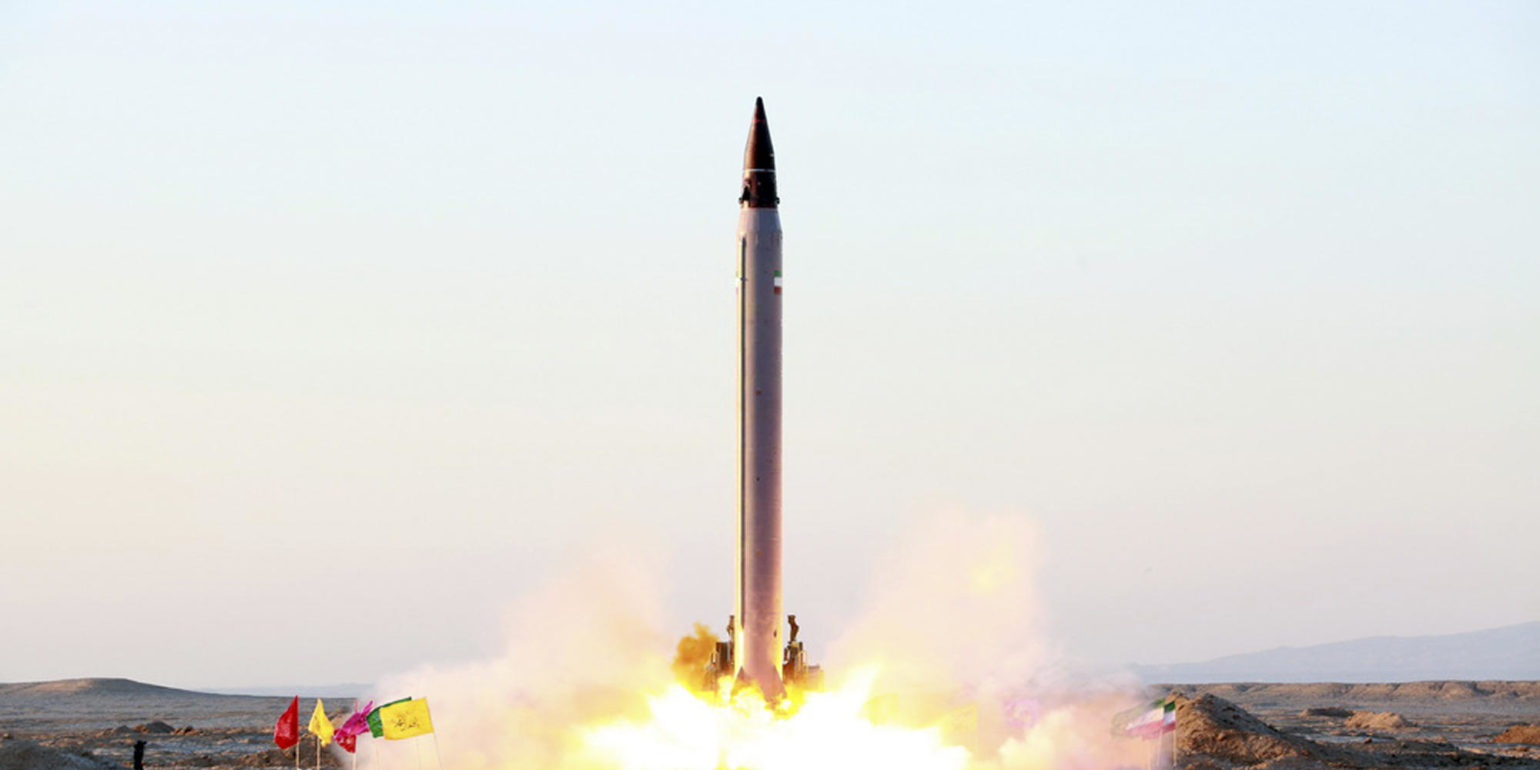
About Ballistic Missiles:
- A ballistic missile is a rocket-propelled, self-guided strategic-weapons system that follows a ballistic trajectory to deliver a payload from its launch site to a predetermined target.
- They are powered initially by a rocket or series of rockets in stages, but then follow an unpowered trajectory that arches upwards before descending to reach its intended target.
- They can carry conventional high explosives as well as chemical, biological, or nuclear munitions. They can be launched from aircraft, ships and submarines, in addition to land-based silos and mobile platforms.
- There are four general classifications of ballistic missiles:
- Short-range: less than 1,000 kilometers (approximately 620 miles), also known as “tactical” ballistic missiles.
- Medium-range: between 1,000 and 3,000 kilometers also known as “theater” ballistic missiles.
- Intermediate-range: between 3,000 and 5,500 kilometers
- Long-range: more than 5,500 kilometers, also known as intercontinental or strategic ballistic missiles.
Foot-and-Mouth Disease (FMD)
The Foot-and-Mouth Disease (FMD) has affected around 60% of milch cattle in Pilibhit district, Uttar Pradesh.

About Foot-and-Mouth Disease (FMD):
- It is a highly contagious viral disease of livestock that has a significant economic impact. The disease affects cattle, swine, sheep, goats and other cloven-hoofed ruminants.
- Intensively reared animals are more susceptible to the disease than traditional breeds.
- It does not affect horses, dogs, or cats.
- It is a Transboundary Animal Disease (TAD) that deeply affects the production of livestock and disrupts regional and international trade in animals and animal products.
- It is also not related to hand, foot and mouth disease, which is a common childhood illness caused by a different virus.
- The organism which causes FMD is an aphthovirus of the family Picornaviridae.
- There are seven strains (A, O, C, SAT1, SAT2, SAT3, and Asia1) which are endemic in different countries worldwide.
- Immunity to one type does not protect an animal against other types or subtypes.
- FMD is characterised by fever and blister-like sores on the tongue and lips, in the mouth, on the teats and between the hooves.
- The disease is rarely fatal in adult animals, but there is often high mortality in young animals. The disease causes severe production losses, and while the majority of affected animals recover, the disease often leaves them weakened and debilitated.
- It was the first disease for which the World Organisation for Animal Health (WOAH, founded as OIE) established official status recognition.





